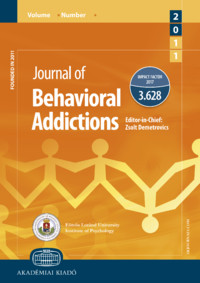Structural characteristics of fixed-odds sports betting products
Structural characteristics of fixed-odds sports betting products
Author(s): Philip W. S. Newall, Alex M.T. Russell, Nerilee HingSubject(s): Behaviorism
Published by: Akadémiai Kiadó
Keywords: gambling; gambling products; product design; internet gambling; gambling innovation
Summary/Abstract: Background and aims. A literature exists on the structural characteristics of electronic gambling machines (EGMs), which are design innovations that can promote spending excessive time and money on these games. Fixed-odds sports betting products, where bettors place sports bets against a bookmaker, have also seen significant innovations in recent years. Despite some differences between these gambling products, similar structural characteristics could also be relevant to sports betting. The aim was to review previous research on contemporary fixed-odds sports betting products, and to identify whether structural characteristics from the EGM literature are also relevant to sports betting. Methods. Structural characteristics uncovered by two influential reviews of EGMs were identified, and their relevance to fixed-odds sports betting products discussed via a narrative review. Results. Structural characteristics of payout interval and potential betting frequency (in-play betting), multiplier potential (accumulators, complex bets, multis), win probability and payout ratio (all bets), bettor involvement (custom sports betting products, cash out), skill required (all bets), and near-misses (accumulators, complex bets, multis) were all identified in modern fixed-odds sports betting products. Discussion and conclusions. Fixed-odds sports betting products have increasingly incorporated structural characteristics previously found in EGMs. Future research could further assess the extent to which these structural characteristics contribute to fixed-odds sports bettors spending excessive amounts of time and money while betting. These findings can help guide further sports betting research, contribute to an improved understanding of the potential universality of gambling product design, and inform policy.
Journal: Journal of Behavioral Addictions
- Issue Year: 10/2021
- Issue No: 3
- Page Range: 371-380
- Page Count: 10
- Language: English

